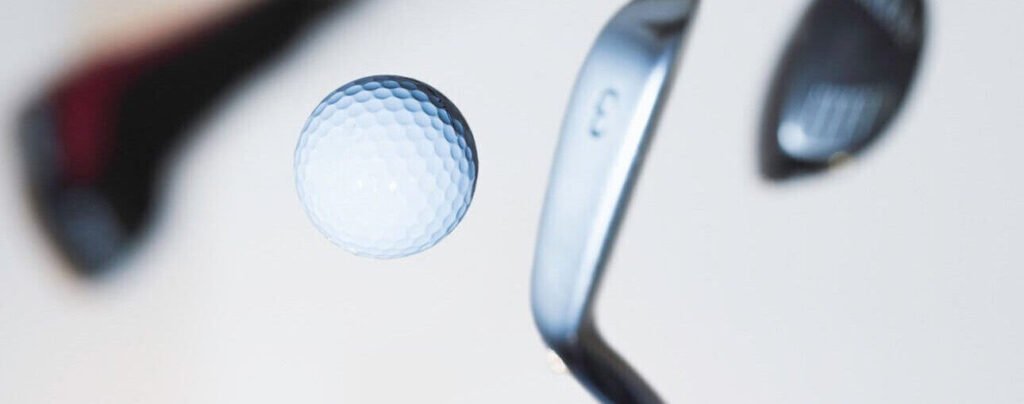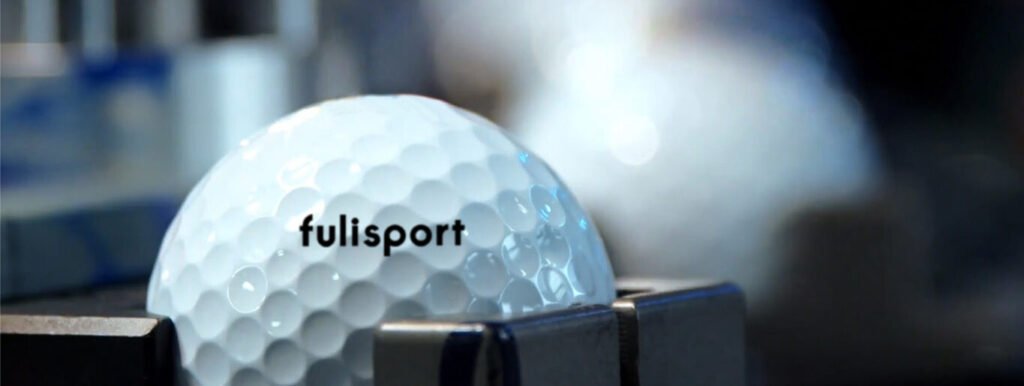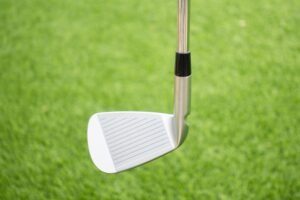
I hope you enjoy reading this blog post.
If you are looking professional golf manufacturer.
Golf Ball Pits: Effects Of Size And Shape On Flight Performance
October 11, 2025
In golf, the flight performance of the golf ball is directly related to the distance and accuracy of the player’s shot. It is a key indicator of the quality of the shot. From the outside, the golf ball appears to be just an ordinary ball. But a closer look reveals that its surface is densely pockmarked. These pits are not random or merely decorative, but through complex aerodynamic principles. Depth affects the various forces that the ball is subjected to during flight, and plays a crucial role in the flight performance of the ball.
Effect Of Crater Size On Flight Performance

Reduced Air Resistance
When a golf ball travels through the air at high speed, air resistance is one of the main factors that hinder its flight. The holes in the surface of the golf ball have a significant effect on the aerodynamics. The larger size of the crater can create a wider turbulent area on the surface of the ball as it flies.
This is because the air flowing through the crater is guided by the crater structure. Form a tight airflow around and close to the surface of the ball, effectively reducing the low pressure zone behind the ball due to air separation. In fluid mechanics, the low pressure area behind the ball creates a dragging force. Obstructing the ball’s progress, while large pits reduce the extent and intensity of the low pressure area. This drag force, known as air resistance, is reduced.
Numerous scientific studies have delved into the relationship between crater size and air resistance. For example, studies have shown that within a certain reasonable range. When the crater diameter increases from 4 mm to 5 mm. The resistance of the golf ball in the air can be reduced by 10% to 15%. This data may seem simple, but it is significant. Reduced air resistance means the ball can break through the air more smoothly during flight. Maintain higher flight speeds and significantly increase flight range.
In order to more intuitively and more deeply explore the impact of crater size on air resistance and flight distance. The researchers conducted a series of rigorous specialized experiments in specialized wind tunnel laboratories. In preparation for the experiment, the researchers carefully prepared several sets of golf balls. The balls are made of exactly the same technology and material, the only difference being the diameter of the pits. Three representative groups of pit diameters were set up: 4 mm, 4.5 mm, and 5 mm.
During the experiment, the researchers placed the golf ball in a specific position inside the wind tunnel. Through advanced technical means, accurate simulation of real batting scene wind speed and batting Angle. To maximize the actual flight environment of the golf ball. At the same time, high-precision sensors are used. Real-time accurate monitoring of the air resistance of the ball under different airflow speeds, and accurate recording of data.
In the common and valuable condition of simulated batting speed set at 100 MPH. The experimental data show obvious change law. When the crater diameter of the ball is 4mm, the air resistance measured by the sensor is about 0.8 Newton.
When the diameter of the pit increases to 4.5 mm, the air resistance drops to about 0.7 Newtons. When the diameter of the pit is further increased to 5 mm, the air resistance is reduced to about 0.68 Newton. From these specific data changes, it can be clearly and intuitively seen. As the diameter of the crater gradually increases, the air resistance of the golf ball during flight shows a significant downward trend.
At the same time, the impact of crater size on flight distance was comprehensively evaluated. The researchers used high-speed cameras to record the trajectory of the ball throughout the wind tunnel. High-speed cameras capture the instantaneous position changes of the ball at extremely high frame rates. Through professional analysis and calculation of these image data, the researchers can accurately calculate the flight distance of the ball.
The experimental results show that under the same simulation conditions, the flight distance of a ball with a crater diameter of 4 mm is about 200 meters. When the diameter of the crater is increased to 4.5 mm, the flight distance of the ball is increased to about 210 meters. A ball with a pit diameter of 5 millimeters would have a distance of about 215 meters.
This series of experimental data fully and strongly prove that the crater diameter can be increased within a reasonable range. It can effectively reduce air resistance and significantly increase the flight distance of the golf ball.
On the Professional Golf Tour, the actual effect of the size of the pit on the effect of the shot can also be observed. Some power players often prefer to use a golf ball with a slightly larger pit. American John Daly, for example, is known in the golf world for his powerful tee shot. In a professional testing environment, when he used a brand of golf ball with a relatively large pit diameter. Accurate measurements found that the average distance of the ball was increased by about 10 yards (about 9.14 meters) compared to the average pit-sized ball.
In a real match scenario, the statistics of multiple serves in a match show. With the big pits, his long-range serve ratio is significantly improved. This advantage gives him a good position in the opening stage. Easier approach to the green, creating better conditions for subsequent rounds.
Increase Lift
The impact of large pits on the flight performance of golf balls is not only reflected in the reduction of air resistance, but also has a significant effect on increasing the lift of the ball. When the air flows through the crater, the flow of air on the surface of the ball becomes extremely complicated. In the area above the ball, the air flow accelerates as it passes through the crater, forming a relatively low pressure area. In the area below the ball, the airflow speed is relatively slow, forming a relatively high pressure area.
According to Bernoulli’s principle in fluid mechanics, this difference in pressure up and down creates an upward force, known as lift. The increase in lift is important for golf ball flight. It helps the ball stay in the air longer and indirectly increases its distance.
However, every coin has two sides, and the bigger the pit is not the better. If the pit size is too large, the surface of the ball will become too rough. At this point, air flowing through the pit can create excessive turbulence. Not only can it not further effectively reduce the resistance, but it will cause the airflow to flow disordered on the surface of the ball. Adding some unnecessary drag will have a negative impact on the overall flight performance of the ball.
In order to understand the internal relationship between the size of the crater and the lift force, the researchers carried out detailed tests in professional golf wind tunnel experiments. During the experiment, the researchers prepared several samples of golf balls with different pit diameters. Accurate simulation of real speed and Angle conditions with advanced simulation equipment. In an environment highly reminiscent of the actual batting scene, the researchers accurately measured the force of the ball in the wind tunnel. The lift force obtained by the ball is accurately calculated by using complex calculation formulas.
The experimental results showed that when the pit diameter was increased from the standard 4.2 mm to 4.8 mm. At the same speed, the ball’s lift coefficient increases by about 8%. An increase in the lift coefficient means the ball gets more upward lift. It is directly reflected in the flight height and flight distance of the ball, both of which have significantly increased. However, when the crater diameter further increased to 5.5 mm, due to excessive turbulence appeared. The lift coefficient of the ball no longer rises, and even slightly decreases.
At the same time, air resistance increases significantly due to excessive turbulence. As a result, the overall flight performance of the ball becomes worse, and the flight distance and flight stability are affected to varying degrees.
Effect Of Crater Shape On Flight Performance

Circular Pit
Among the many pit shapes on the surface of the golf ball, the round pit is undoubtedly the most common. The unique geometric characteristics of the circle enable it to generate stable air flow during the flight of the ball. When air flows around a ball with a circular pit, the symmetry of the circle makes the air force on the ball more uniform in all directions. This uniform state of force means that the direction of the ball can remain relatively stable during flight. It is not easy to be disturbed by airflow fluctuations and have a large deviation.
From an aerodynamic point of view, circular pits perform more evenly in the two key aspects of reducing air resistance and increasing lift. This balance provides good overall flight performance for the ball. Take the Titleist Pro V1, a golf ball favored by professional players, for example, its circular concave design is a classic.
The ball’s circular concave design allows the ball to maintain a stable trajectory in flight during actual shooting. Whether it’s a player swinging at full force from the tee in pursuit of a long shot, or precisely controlling where the ball lands as he approaches the green. Round pits all play an indispensable and critical role.
Through the analysis of a large number of statistics on the PGA Tour, it is more intuitive to see the remarkable effect of circular pits in improving the accuracy of the shot. In a shot scenario of 150-200 yards from the green, the data shows. Players using the Titleist Pro V1 ball were about 12 percent more likely to land the ball accurately in the target area than players using other non-circular pitted ball designs.
Many Pro players reported after the game that the Titleist Pro V1’s circular pit design gave them more confidence when hitting the ball. Because the trajectory of the ball is stable, it is easier to predict. In the key batting moments of the game, they can better adjust the batting strategy according to the actual situation. Accurately control the effect of the shot, so as to achieve better results in the game.
Oval Or Other Non-circular Pits
Oval pits bring a unique change to the flight performance of golf balls. The orientation of the ellipse itself makes it possible to change the flow characteristics of the air flow in a specific direction. In turn, it has a special and significant effect on the rotation and flight trajectory of the ball. Some carefully designed oval pits allow the ball to spin in a specific direction as it flies. This special rotation effect is of great significance in the actual playing scene.
For example, when players encounter obstacles on the course that need to go around trees, bunkers, etc. Or precisely control the direction of the ball’s roll on the green to avoid getting caught in difficult terrain or to achieve better putting position. A golf ball with a specific oval pit design can take full advantage and help players better achieve their goals.
In addition to oval pits, the modern golf ball design field also cleverly applied some irregular shape pits. These irregularly shaped pits are usually designed by designers based on specific flight conditions. Such as different wind speed, impact Angle and other complex and changeable environmental factors. After a lot of experiments and simulation analysis design.
The aim is to optimize the aerodynamic performance of the ball so that the flight performance of the ball can be better adapted to these special situations. To meet the needs of players in a variety of court environments. Whether in the wind howling seaside course, or in the complex terrain, the Angle of the ball changing mountain course. These golf balls with specially shaped pits can provide players with more stable and more realistic flight performance.
A well-known golf brand has launched a golf ball with an oval pit design for players who need precise control over the course of the ball. In a European Tour event, Spain’s Sergio Garcia faced a very challenging batting scene. He needed to land his ball accurately on the narrow left side of the green with a grove of trees in front of him.
At the critical moment, he chose to use this golf ball with an oval pit design. With the special spin effect of the ball’s oval pit design, he managed to get the ball to curve just right in the air. The ball, like a graceful arc, skillfully navigated the forest obstacles. It landed in the target area exactly, creating extremely favorable conditions for his subsequent putts.
After the game, Garcia specifically mentioned in an interview. The ball’s unique concave design plays a crucial role in this complex batting scene. It is because of this design that he can successfully cope with difficult situations in the competition and achieve better results.
The size and shape of the pits on golf balls are no accident. It is the result of countless experiments, careful design, and continuous optimization. They work together on the flight performance of golf balls through complex and profound aerodynamic principles. It provides solid technical support for players to achieve longer hitting distance and more accurate hitting control on the court.
Whether it is a power player who pursues the distance of the ball, or a technical player who focuses on the accuracy of the ball. Learn more about the impact of pits on the flight performance of golf balls. It can help them choose the golf ball that is more suitable for their hitting style and technical characteristics among the many golf products. In order to give full play to the strength on the court and improve the overall performance level.
FAQS
How do I choose the right golf ball for my skill layer?
Beginners should start with two-layer balls for ease of use and affordability. Intermediate players might benefit from three-layer balls for better control.
Advanced players can explore four or five-layer options to enhance their performance.
Are more layers always better?
Not necessarily. While more layers can offer advanced performance features, they may not be suitable for every player.
Beginners might find multi-layer balls harder to control, while more experienced golfers can benefit from the added complexity.
What is Fuli lead time?
Usually, we ship orders in 2 weeks. But it will take a little longer if we have the heavy burden of production tasks. It also takes more time for customized products.
Can the weather affect the choice of golf ball?
Absolutely. In colder weather, a softer ball might provide better feel, while in warmer conditions, a firmer ball might maintain distance better.
Additionally, wet conditions may call for balls that offer better traction and control.
How often should I change my golf balls?
Golf balls should be replaced if they show visible signs of damage (scrapes, cuts) or if you notice a decline in performance.
Regular players may want to change balls every few rounds, while casual players can go longer.
Leave a Reply
Your email address will not be published. Required fields are marked *

Are you looking for
GOLF BALL?
Offers Suitable Golf For Wholesalers And Professionals















